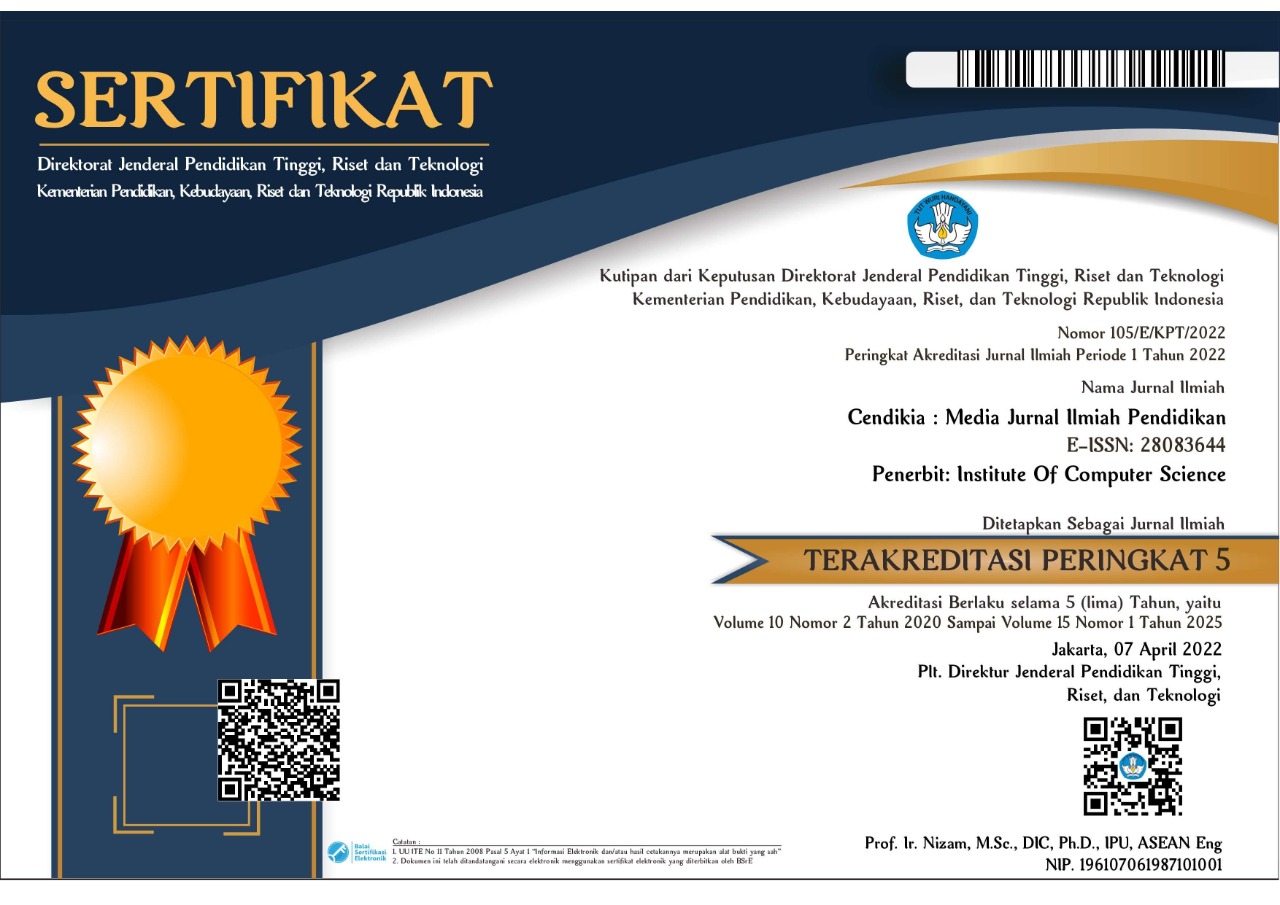Building nationalism through history lessons for high school students in the city of Padangsidimpuan
DOI:
https://doi.org/10.35335/cendikia.v13i4.3634Keywords:
History;, National Learning;Abstract
The portrait of Indonesia's national education today is experiencing a downturn. A number of problems still surround our world of education. The problem is not only in the form of equal distribution of educational opportunities, quality improvement and facilities, but also the low level of relevance of education to the needs of the world of work. This study aims to find out: 1) The values ??of nationalism contained in history lessons, 2) Learning strategies for building nationalism carried out by history teachers, 3) Obstacles experienced by history teachers in increasing a sense of nationalism, 4) Results achieved history teacher in increasing a sense of nationalism. The results obtained are that students can cultivate the values ??of nationalism such as discipline, honesty, diversity/diversity, unity and similarity. By using the lecture, discussion and question and answer methods as well as interesting media, relevant sources, motivation and reinforcement on the material on the Nationalism Movement in Indonesia, history teachers at Padangsidimpuan Senior High School can instill a sense of nationalism in students.
References
Amid, S. (2007). Modern Nationalism Concept. Main Library Gramedia.
Aristotle's, et. EJP (1982). Philosophy of Education: Studies in Philosophy, Schooling, and Educational Policies. Prentice-Hall, Inc.
Elmubarok, Z. (2008). Grounding Builds Value. Alphabet.
Freire, P. (2002). Politics of Development, Culture, Power and Liberation. Student Library.
Gottschalk, L. (2009). Understand History. UIPress.
Hugiono and PK, P. (2002). Introduction to History. Rineka Cipta.
Husinaffan, M., & Maksum, H. (2016). Rebuilding the Attitude of Indonesian Nationalism in Warding Off Foreign Cultures in the Era of Globalization. Elementary School Teacher Education (PGSD) JURNAL PESONA BASIC, Syiah Kuala University, 3(4), 65–72. http://jurnal.unsyiah.ac.id/PEAR/article/view/7542
Joyce, B. (1992). Models Of Teaching. Nedliam Heights Massachusetts.
Kohn, H. (1984). Nationalism Meaning and History (Translation). Erlangga.
Kuntowijoyo. (2006). Explanation of History (Historical Explanation). Tiara Discourse
.Lay, C. (2006). Nationalism and the Nation State. Journal of Social & Political Sciences, 10(2), 165–180.
Muliana, S. (1996). Awareness of Nationalism, from Colonialism to Independence. New Ink.
Nasution, A. . (1984). Fulfilling the Call of Duty Volumes 1-8. Holy mountain.
Nieven, N, McKenney, S. & VDA (2006). Educational design research. K McKenney, S & Nieven (Eds) 2006.
Pamungkas, C. (2014). Border Community Nationalism, Case Study, Sangir People, Sangihe Regency. LIPI.
Government of the Republic of Indonesia, National Character Development Policy 2010-2025, (2010).
Poespowardjoyo, B. (2003). Building National Insights, Challenges and Dynamics of Struggle of Indonesian Intellectuals. Grafindo.
Rikard, B. (2002). One Hundred Years of Bung Hatta. Alphabet.
Santrok. W, J. (2008). Constructive Psychology. Prenada Media Group.
Soedarsono, S. (2009). Character Leads the Nation from Darkness to Light. Gramedia.
Sulistiyono, ST (2018). Nationalism, the Nation-State, and Indonesia's National Integration: Is It Still Necessary? Citra Lekha Historical Journal, 3(1), 3. https://doi.org/10.14710/jscl.v3i1.17912
Downloads
Published
How to Cite
Issue
Section
License
Copyright (c) 2023 Burhanuddin

This work is licensed under a Creative Commons Attribution-NonCommercial 4.0 International License.





